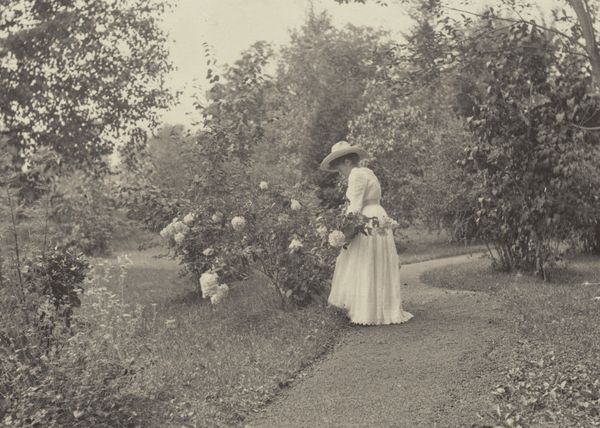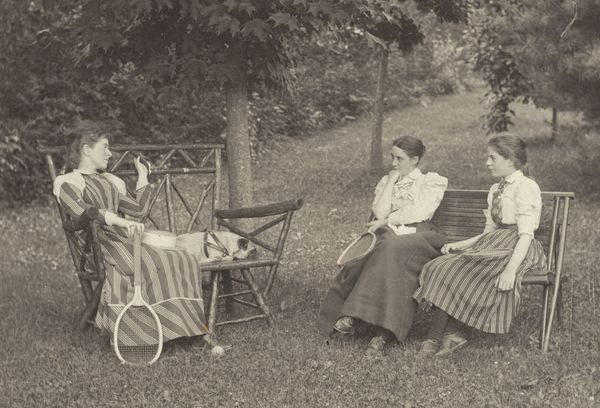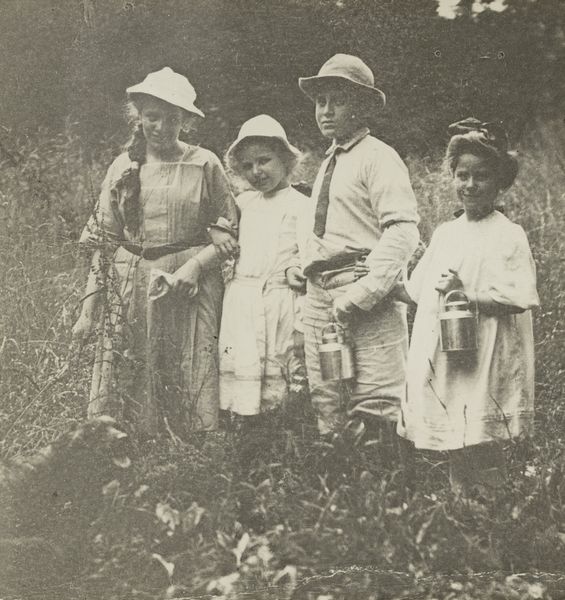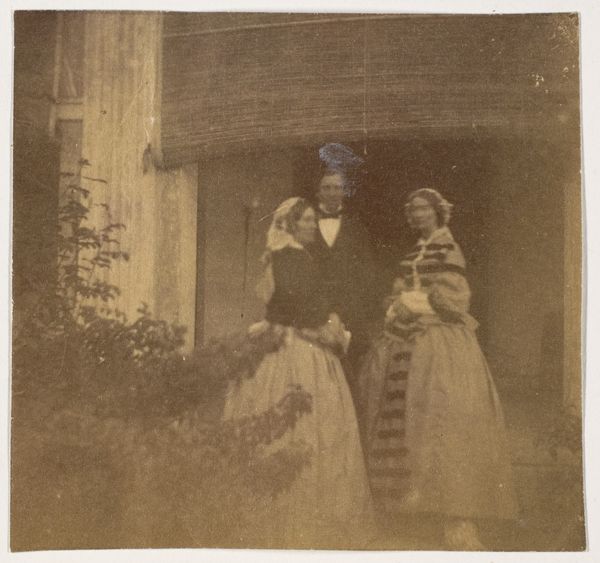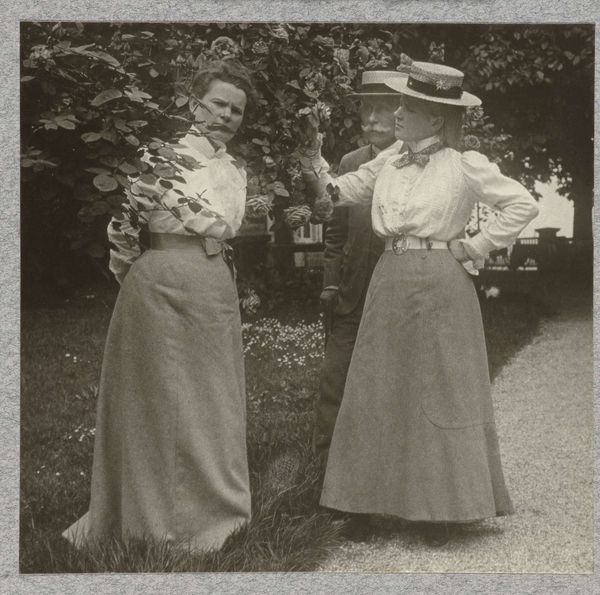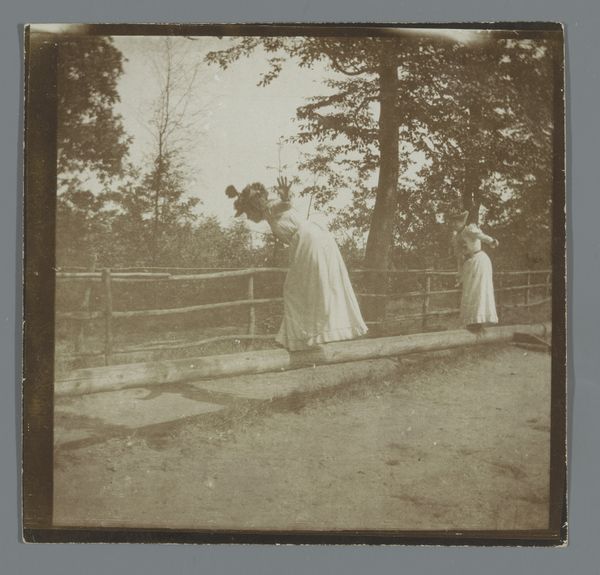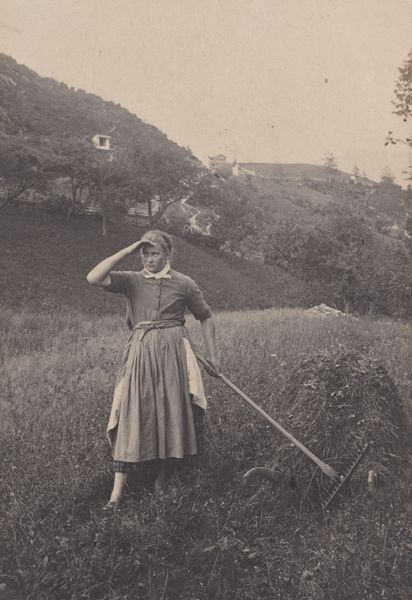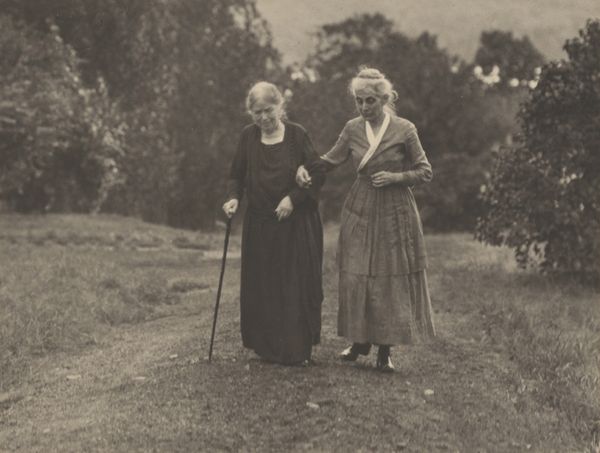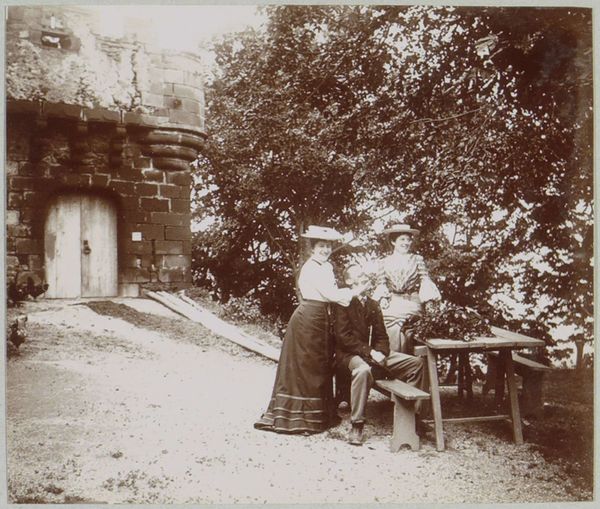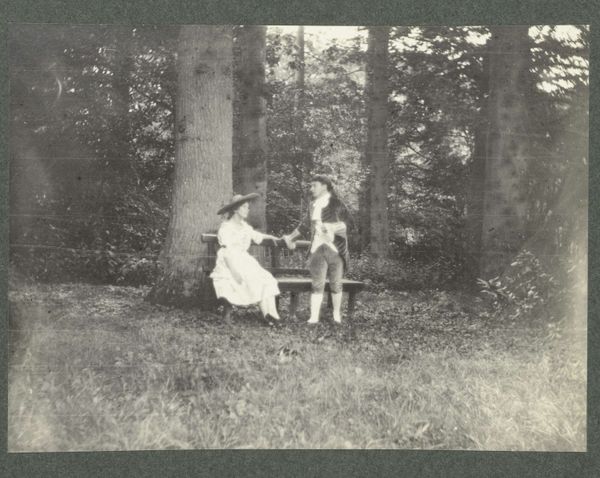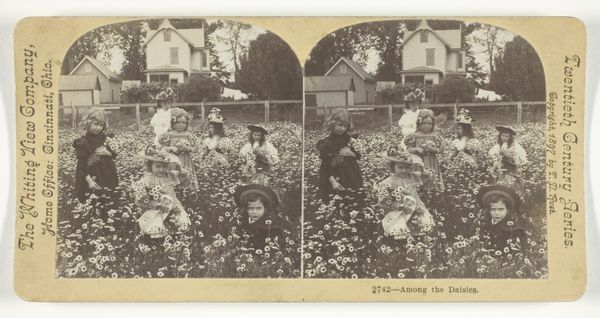
Dimensions: sheet (trimmed to image): 11.1 × 17.7 cm (4 3/8 × 6 15/16 in.) page size: 34.8 × 27 cm (13 11/16 × 10 5/8 in.)
Copyright: National Gallery of Art: CC0 1.0
Editor: Here we have Alfred Stieglitz's "A Flowerbed at Oaklawn," a gelatin-silver print from sometime between 1893 and 1896. The image has such a nostalgic, almost dreamlike quality. What jumps out at you when you look at it? Curator: I immediately think about the changing roles of women at the fin de siècle, a theme Stieglitz explored quite a bit. We see these women, not engaged in labor, but rather in leisurely pursuit, collecting flowers. Notice, however, how they're framed within a cultivated, controlled landscape. Does that strike you as a contrast? Editor: Absolutely, it's a garden, not a field. It suggests privilege and constructed beauty. Are you saying that Stieglitz is using the image to say something about the social expectations of women from this time? Curator: Precisely! Consider the rise of the "New Woman" and how she was perceived. Stieglitz often situated his subjects within landscapes to explore these tensions – the push and pull between societal expectation and emerging freedoms. It invites a question about how women occupy space. What do you make of their placement in the scene? Editor: I hadn't thought about it that way. They are quite literally grounded, close to the earth. Their posture also speaks to this constrained freedom that you describe. Curator: And notice how their clothing, while stylish, still conforms to expectations. Even their activity of flower gathering speaks to domesticity. It’s fascinating how much the socio-political context informs our reading of what might appear to be a simple snapshot of daily life. Editor: It is, and understanding that context really deepens my appreciation for Stieglitz’s artistic intent. Curator: Exactly, and for me, that highlights art’s role in social discourse. It prompts critical engagement with norms and histories.
Comments
No comments
Be the first to comment and join the conversation on the ultimate creative platform.
